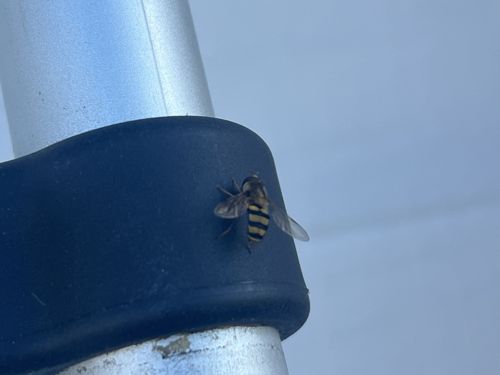Hoverfly (or Flower Fly)
Scientific Name: Syrphidae (Family)
Order & Family: Order: Diptera, Family: Syrphidae
Size: Generally 4 to 20 mm (0.16 to 0.79 inches) in length, varying by species.

Natural Habitat
Hoverflies are found in a wide variety of habitats where flowering plants are present, including gardens, parks, meadows, forests, agricultural fields, and urban areas. Larval habitats vary depending on the species' diet, ranging from plant foliage (aphid predators) to decaying wood or aquatic environments.
Diet & Feeding
Adult hoverflies feed on nectar and pollen, making them important pollinators. The larvae of many species are carnivorous, primarily preying on soft-bodied insects like aphids, mealybugs, thrips, and small caterpillars. Some larvae feed on decaying organic matter or fungi, and a few are plant feeders.
Behavior Patterns
Adult hoverflies are active during the day, often seen hovering in mid-air near flowers. They are excellent mimics of bees and wasps, which helps deter predators. Larvae are typically predatory, moving slowly to capture their prey, while some are saprophagous (feeding on decaying matter) or phytophagous (feeding on plants). Eggs are usually laid singly near aphid colonies for predatory larvae.
Risks & Benefits
Benefits: Hoverflies are highly beneficial insects. Adults are important pollinators of many crops and wild plants, contributing significantly to biodiversity and food production. The predatory larvae are excellent biological control agents, helping to naturally manage populations of agricultural pests like aphids, reducing the need for chemical pesticides. Risks: There are no known risks to humans from hoverflies. They are harmless and do not sting or bite.
Identified on: 8/25/2025